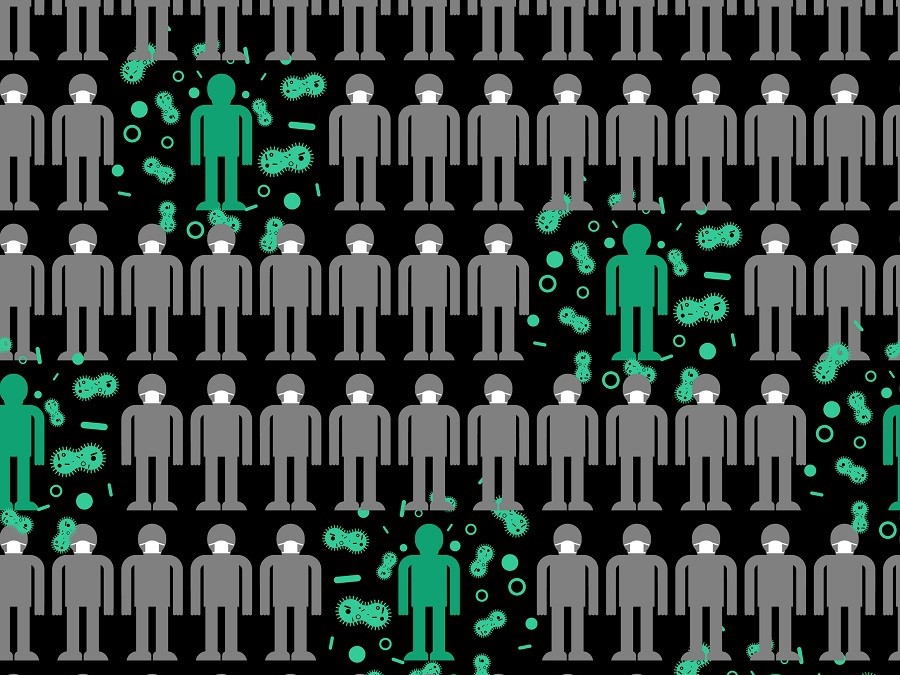Investigating the Sociodemographic Factors in Symptomatic and Asymptomatic Covid-19 Cases

Knowing what makes a patient more or less likely to be a silent carrier could help protect the population and prevent the spread of Covid-19.
Read Arabic story here.
Emerging in Wuhan in December 2019, Covid-19 rapidly spread across the globe through sustained human-to-human transmission. Affecting over 77 million people and causing over 1.7 million deaths, the Covid-19 pandemic proved difficult to control, in large part due to asymptomatic cases and the ease of its transmission.
A large portion of the people who contract Covid-19 never develop noticeable symptoms: they don’t cough or feel short of breath, they don’t run a fever, they don’t lose their sense of smell. They have few if any signs of illness.
Working with Dr. Rami Al-Rifai and Luai Ahmed from United Arab Emirates University’s Institute of Public Health, and Farida Ismail Al Hossany, Bashir Aden, Shamma Abdullah Al Memari and Shereena Khamis Al Mazrouei from Abu Dhabi Public Health Center, Dr. Juan Acuna, Associate Professor and Chair of the Department of Epidemiology and Public Health at Khalifa University, investigated Covid-19 cases, both symptomatic and asymptomatic, to determine the sociodemographic characteristics, travel history, working status and chronic comorbidities of the patients involved.
This first of its kind study of Covid-19 positive cases in the UAE was published in PLOS One, shedding light on the strength of the association between sociodemographic characteristics and chronic comorbidities with presenting symptoms.
In Dr. Acuna’s research, 82.2 percent of the cases tested were expatriates, with 43.5 percent of these being asymptomatic. The researchers wanted to identify the sociodemographic characteristics associated with presenting symptoms in patients with Covid-19. They found that older age, working, or having at least one chronic disease was independently associated with developing Covid-19 symptoms; patients were more likely to be symptomatic if they fell into any one of these categories.
Interestingly, the researchers found the symptomatic cases occurred in significantly older patients than the asymptomatic cases, and those working in healthcare settings and aviation or tourism services were more likely to be symptomatic than asymptomatic. Additionally, a significantly higher proportion of symptomatic cases had at least one chronic comorbidity.
“Younger people are more likely to be healthier and not have underlying comorbidities such as diabetes or hypertension,” explained Dr. Acuna. “However, they are also more likely to be working and in contact with other people who may be carriers. Repeated exposure to Covid-19 may have contributed to an increased level of the contracted viral load, which may have expedited the symptomatic state.”
Globally, patients with asymptomatic Covid-19 infections have a similar viral load as those with symptomatic infections, and approximately 80 percent of Covid-19 cases are asymptomatic or mild. While this is good for the patient as they experience little to none of the illness caused by the novel coronavirus, a patient with no knowledge of their disease can potentially transmit the virus to other people without any awareness.
While coughing, a prominent symptom of Covid-19, may result in more viral particles shared than talking or breathing, meaning symptomatic patients are more contagious, asymptomatic patients are more likely to be in close contact with others.
“As an outbreak containment strategy, a large number of contacts of confirmed Covid-19 cases were traced and tested,” explained Dr. Acuna. “The first two reported Covid-19 symptomatic cases were two members of a cycling racing team who had arrived in the UAE in February. From these two cases, 693 individuals were traced and tested for Covid-19 within two days after identification. Contact tracing and testing can detect a substantial number of potential silent transmitters.”
While these silent carriers were in the majority according to the results of this research, being symptomatic was more common in patients with existing chronic diseases. Diabetes and hypertension were the most frequent chronic diseases reported in the research population, which is in the line with other research documenting these diseases as the most distinctive comorbidities in patients with Covid-19.
“Patients with chronic comorbidities are more likely to be older and suffer from immune system impairments,” explained Dr. Acuna. “Patients with diabetes suffer from a lack of energy supply to immune cells, which weakens the immune system’s response to the virus. In patients with hypertension, the medications they were prescribed to reduce their blood pressure were associated with an increased viral load of Covid-19 in the patient, delaying viral clearance and making them more likely to present with symptoms.”
Importantly, the research showed a substantial proportion of the Covid-19 cases in the Abu Dhabi Emirate were asymptomatic, meaning implementing prevention measures and raising awareness among populations working in high-risk settings is necessary. The estimated proportion of asymptomatic cases is a vital parameter for future studies, but the strength of the association between symptoms and exposure, age and work settings is vital for public health prevention and control interventions. Knowing what makes a patient more or less likely to be a silent carrier could help protect the population and prevent the spread of Covid-19.
Jade Sterling
Science Writer
29 April 2021




